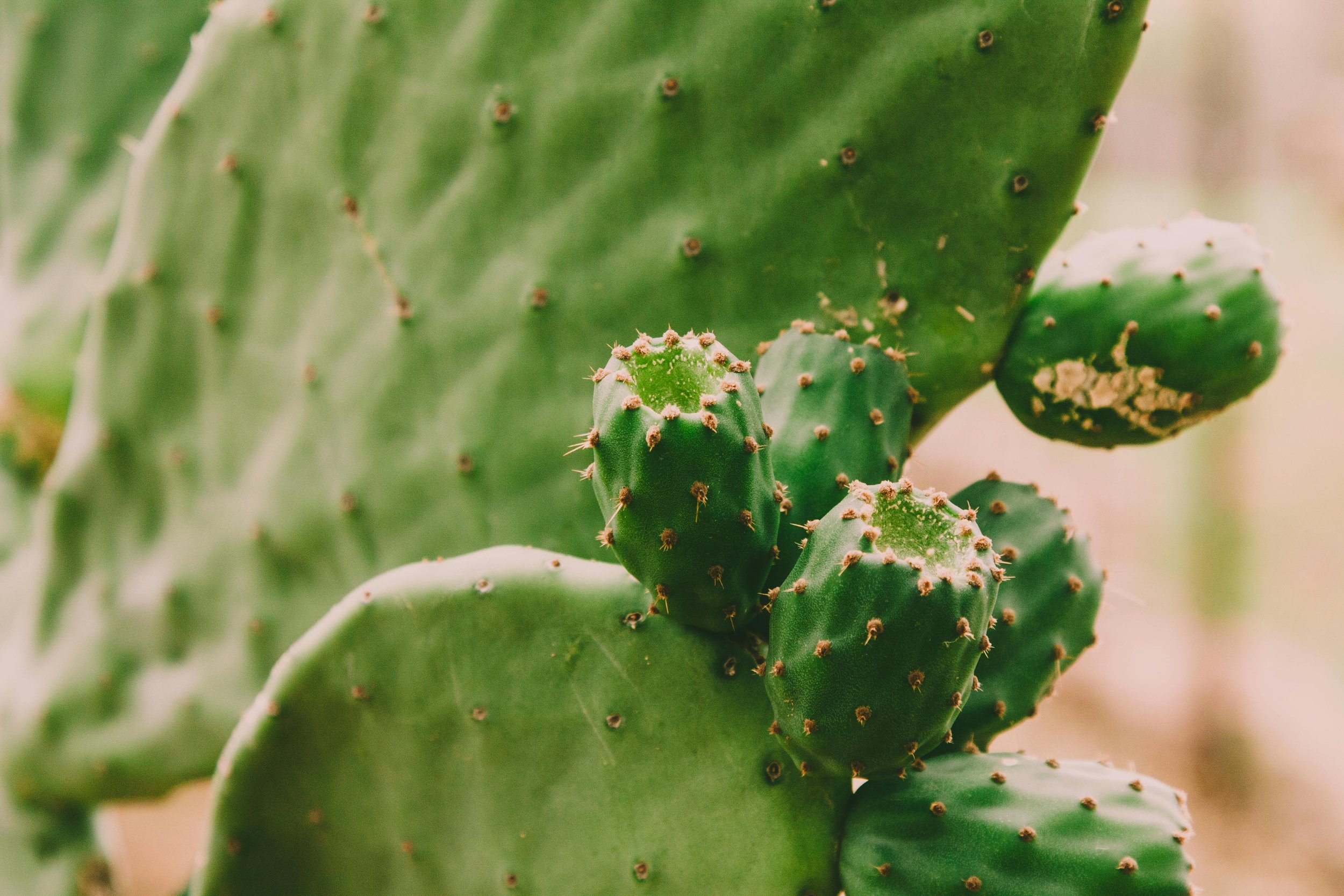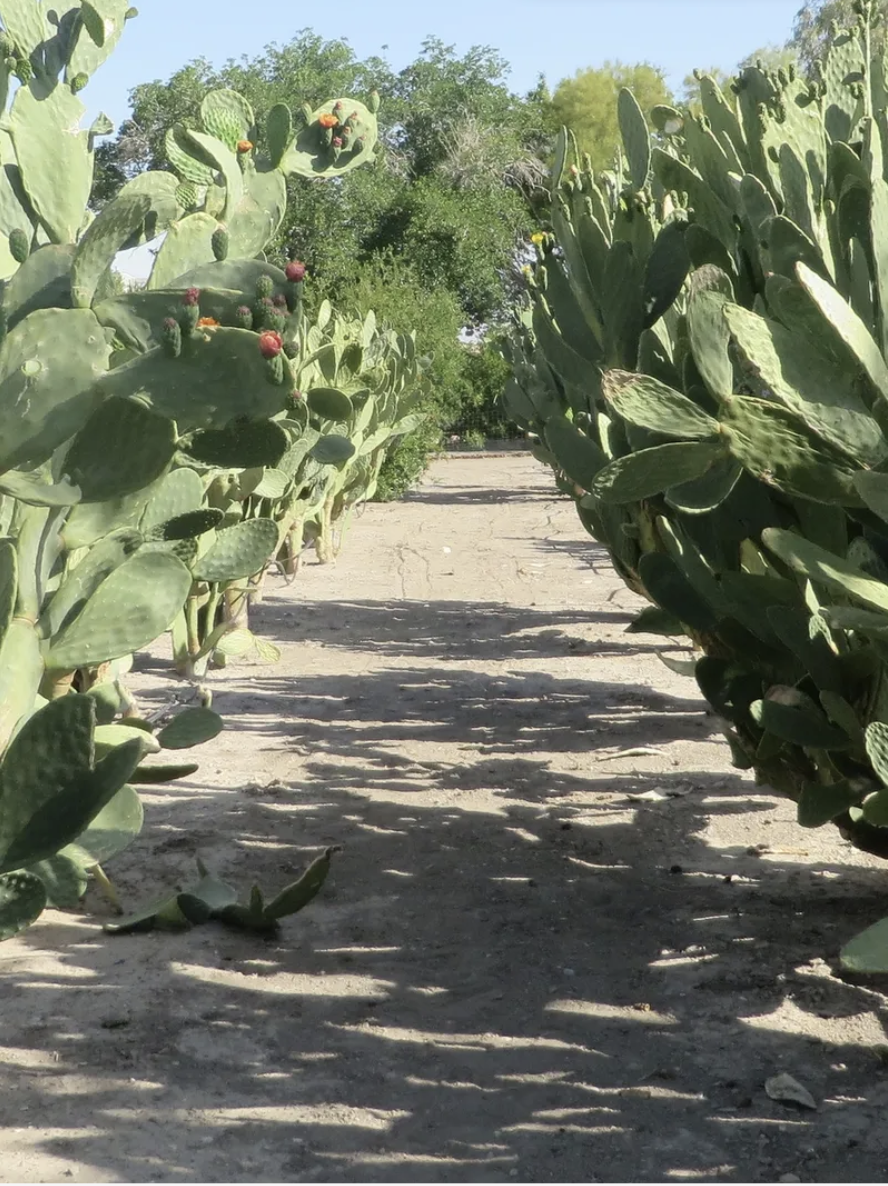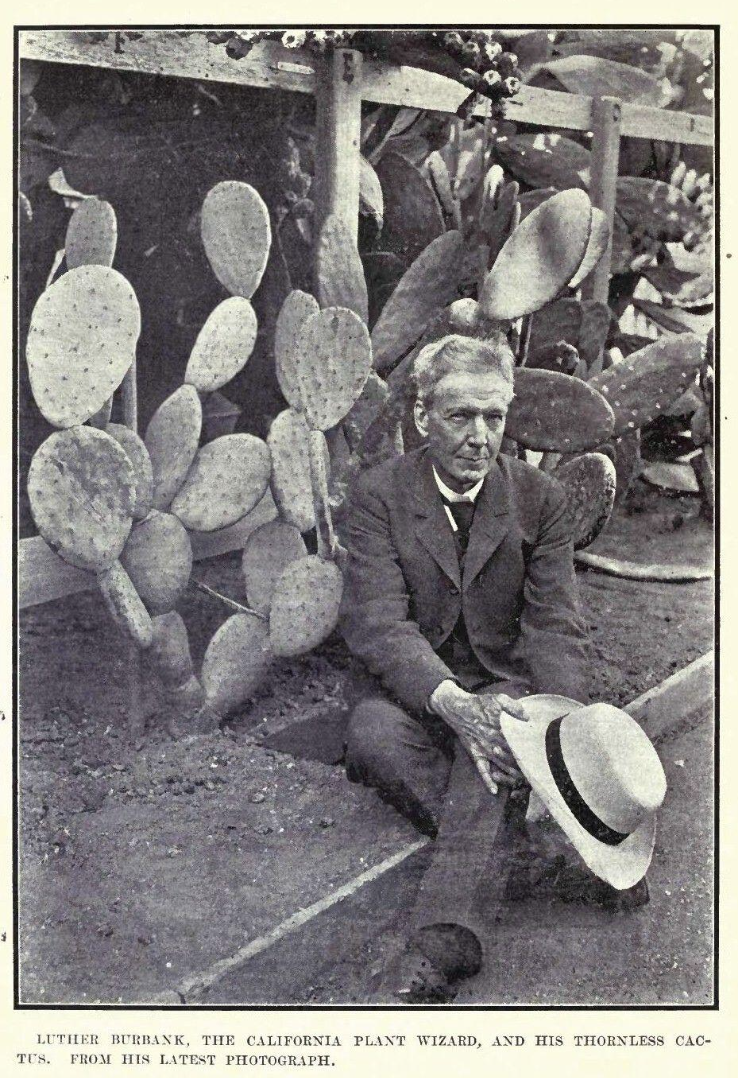
Who We Are
We are a nonprofit based in Las Vegas Nevada, that is committed to advancing spineless Opuntia ficus indica (i.e. Prickly Pear Cactus) as a viable alternative to the farming of water intensive crops in the arid and semi-arid environments of the United States.
We see Opuntia as an innovative avenue for sustainable, regenerative agriculture, as well as durable and much needed means of carbon sequestration. We believe the farming of Opuntia presents an incredible opportunity for struggling agricultural economies to be revived in the arid southwest, highlighting one of our foremost goals: to support existing communities’ efforts to adapt to changing climates, and empower them to more efficiently and sustainably cultivate the land, to the benefit of all.
Why Opuntia?
Originating in the Americas, Opuntia is the most wide spread, domesticated and commercially imported cactus, farmed in scores of countries, with its spineless varieties growing in both production and functionality. Roughly 300 identified species exist within the genus Opuntia, 15 of which are largely cultivated.
Opuntia has real potential to improve the resilience of agriculture in regions that are facing water scarcity, harsher droughts, higher temperatures, and the growing threat of desertification. As these conditions become more prevalent, transitioning to plants adapted to withstand extreme temperatures and survive drought conditions is a necessary step towards keeping animal husbandry systems and crop production viable in these environments.
Our aim is to increase awareness of these cacti as a reliable and profitable crop that has come to benefit agricultural economies throughout much of the arid and semi arid regions of the world, yet has been unfortunately disregarded in the United States, much to our disadvantage. As a high yielding crop with a plethora of uses, we see Opuntia as a real opportunity to revitalize and reimagine our agriculture in line with the ecosystems we cultivate.
Our Target Species
The Sabrana variety, belonging to a hybrid between O. ficus indica and O. lindheimeri has been extensively researched and found to be an incredibly temperature resilient, water efficient, sturdy and tall growing strain of Opuntia.
Tested extensively by the University of Nevada, Reno, along side 14 other species of Opuntia under semi-arid land conditions, this particular strain “showed superior biomass productivity and dry matter content (DMC) useful for forage, fodder, or biofuel production.” (Neupane et al., 2024)
Tissue Culture Micropropagation
Undertaken by Luther Burbank Agricultural Station in Coachella Valley, California
Tissue cultures collected from Clark County Cooperative Extension Service facilities location in Logandale, NV
Phase 1 of the Carbon Cactus Project is nearly complete, our cacti have grown well and must soon be placed in their final home. This brings us to Phase 2: the creation of a demonstrative pilot farm. Its purpose will be three fold:
Propagation - Harvesting pads for future plantings and undertaking large scale tissue culture micropropagation
Education - Demonstrate organic low input cactus agriculture
Research - Evaluate best practices and engage with University studies
Industrial production of Opuntia has not yet been implemented in the US, therefore standardized methodological frameworks to evaluate yield performance under our labor and management parameters are not yet established. A pilot farm is the first step to determining the greatest feasibility in scaling to larger domestic Opuntia plantations. We will test varying densities, management and harvesting strategies as a proof of concept for how this industry can most effectively take root in our arid regions.
Pilot Farm
Our Story
In May of 2022, we partnered with Luther Burbank Coachella Agricultural Station to undertake the first large scale Opuntia propagation effort in the US. 2,500 Opuntia tissue cultures were cloned have been cared for by LBCAS with the intention of planting a demonstrative farm in Southern Nevada for further research and cladode propagation.
LBCAS is a testament to it’s inspiration Luther Burbank, famed for his agricultural and botanical expertise in the early 1900s, hybridizing countless species that would change the face of US agriculture for next century and beyond. You may know him for the Russet Burbank Potato, however one of his greatest developments were to that of the spineless prickly pear cactus, recognizing its potential for food and animal fodder in arid and semi arid regions.
We are honored to have LBCAS’ support in carrying on Luther Burbank’s passion for these remarkable plants and his drive to improve and adapt our food and agricultural systems in how they relate to the environments we seek to farm.
Sustainable Development
Goals
Sustainable agriculture occurs where advantages to humans and their ecosystem intersect, where our practices can ensure the security of future generations, and healthy environments can support a healthy society. In the face of rising temperatures, more frequent and extensive droughts, and shrinking aquifers, our dryland agricultural systems are more at risk than ever. Nowhere is adaptation more imperative in the US than in the Southwest, particularly the lower Colorado basin states of California, Nevada and Arizona. We propose the farming of Opuntia cacti as the next step towards a more sustainable and rewarding US agricultural model, with immediate utility in both carbon emissions reductions and efforts to combat desertification.
Opuntia has the amazing power to regenerate land degraded by intensive farming practices while facilitating vast amounts of carbon capture in largely treeless landscapes-for which we see a future role in the voluntary carbon market. The ecosystem services provided by these cacti also make them excellent prospects for general land management in desert regions where shade, wind and fire breaks can be utilized, and where not only soil health, but biodiversity can be improved by their establishment of wildlife corridors.





